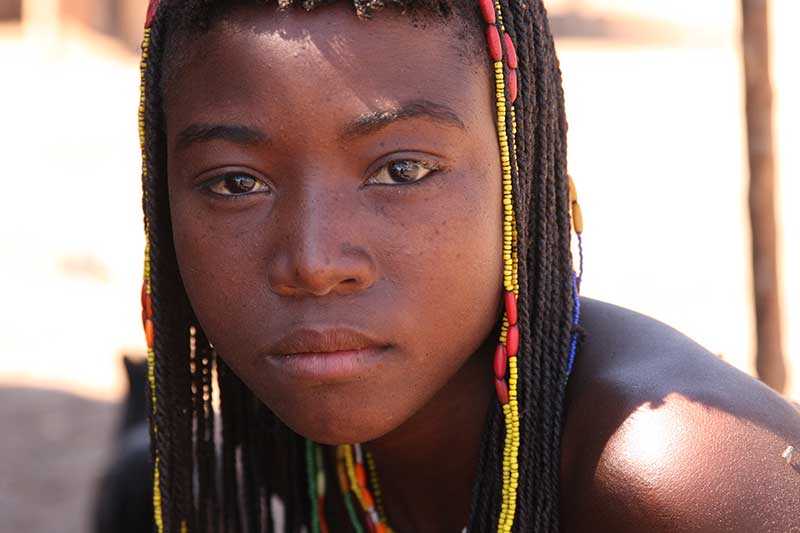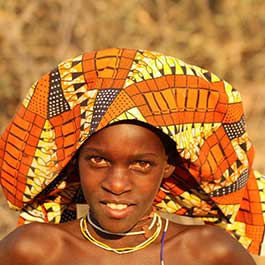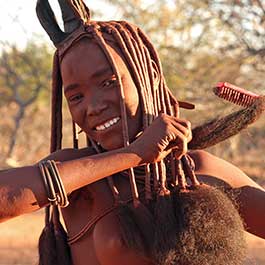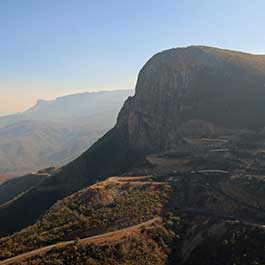
Why choose Angola as your travel destination?
While it has some very well-known neighbours – among them Namibia and Zambia – Angola is far removed from Africa’s long established and polished tourist destinations. Emerging from decades of civil war in 2002, Angola remained one of the most difficult African countries to visit up until 2017. It remains a challenging travel destination, which should prove attractive to the travel savvy who are aware that rapid development is both a blessing and a curse. But even for the well experienced traveller, patience is required.
Although blessed with magnificent scenery and some outstanding natural features like Kalandula Waterfalls, Africa’s third highest; Tunda-Vala volcanic gorge; and the dramatic Serra da Leba escarpment, it is Angola’s cultural diversity which currently makes it such a special travel destination. Its colourful ethnic groups – among them the Muila, Mucubal, Himba, MuDimba, Mucuis, Nguendelengo and Cuepe – live in the south of the country, the area of focus for an Angolan cultural safari.
Angola’s opportunities for cultural tourism can result in both positive and negative effects. On the positive side, visiting tribal peoples promotes cross-cultural interaction and empowers host communities. Tourism supports arts and crafts, cultural traditions, and strengthens cultural values. On the negative side, large groups of tourists who are not educated about local traditions and who can easily offend by demanding photos or taking photos without permission can do a great deal of harm. If you want to undertake a cultural trip to Angola then choose a consultant who is honest about finding that tricky (perhaps impossible) balance between good cultural tourism and becoming an adverse influence.
Angolan national parks and their wildlife suffered huge losses during the civil war period. In Iona National Park, the elephant and rhino populations were decimated. Between 2019 and 2021, the Government of Angola signed Memorandum of Understandings (MoUs) with the conservation organization African Parks to develop, manage, and rehabilitate Iona, Luengue-Luiana and Mavinga National Parks, all three of which are located in Angola’s south and southeast. Iona National Park constitutes the northern tip of the oldest desert in the world – the Namib – although in Angola it is called the Moçâmedes Desert. Moçâmedes is contiguous with Namibia’s Skeleton Coast National Park and further south, with Namib-Naukluft National Park, thus creating one of the largest trans-frontier conservation areas on the planet. According to African Parks, there are small populations of zebra, oryx, and springbok and EVEN SMALLER populations of cheetah, leopard, and brown hyaena in Iona National Park, the necessary potential to develop the park for tourism. Iona is also home to the distinctive Welwitschia mirabilis plant. An endemic plant of the Namib Desert, the Welwitschia is referred to as a “living fossil” because it is believed to have evolved 200 million years ago. Your only opportunities to see this dinosaur of a plant are in Angola and Namibia.
It works freely with a diverse collection of accommodation owners and associates, which best serves each client’s unique needs. MTT is a small company, the advantage of which is quick decision-making ability, room for lots of flexibility, and personalized service. Broad experience and knowledge of more than one African country makes MTT a qualified consultant for anyone seeking to travel to Angola.
Outside of the capitol Luanda and larger cities, the accommodation options are limited but of fairly good standard. Just watch out for some very hard mattresses!
Angola has one of the highest costs of living in Africa. It is expensive for visitors. It is difficult to estimate an accurate per diem. Each travel request is dependent upon the services required, destinations included and their accessibility, and must be estimated individually.
MTT LTD accepts Visa and MC credit cards, debit cards, and PayPal through its online invoicing and payment system operated by 3G Direct Pay.



